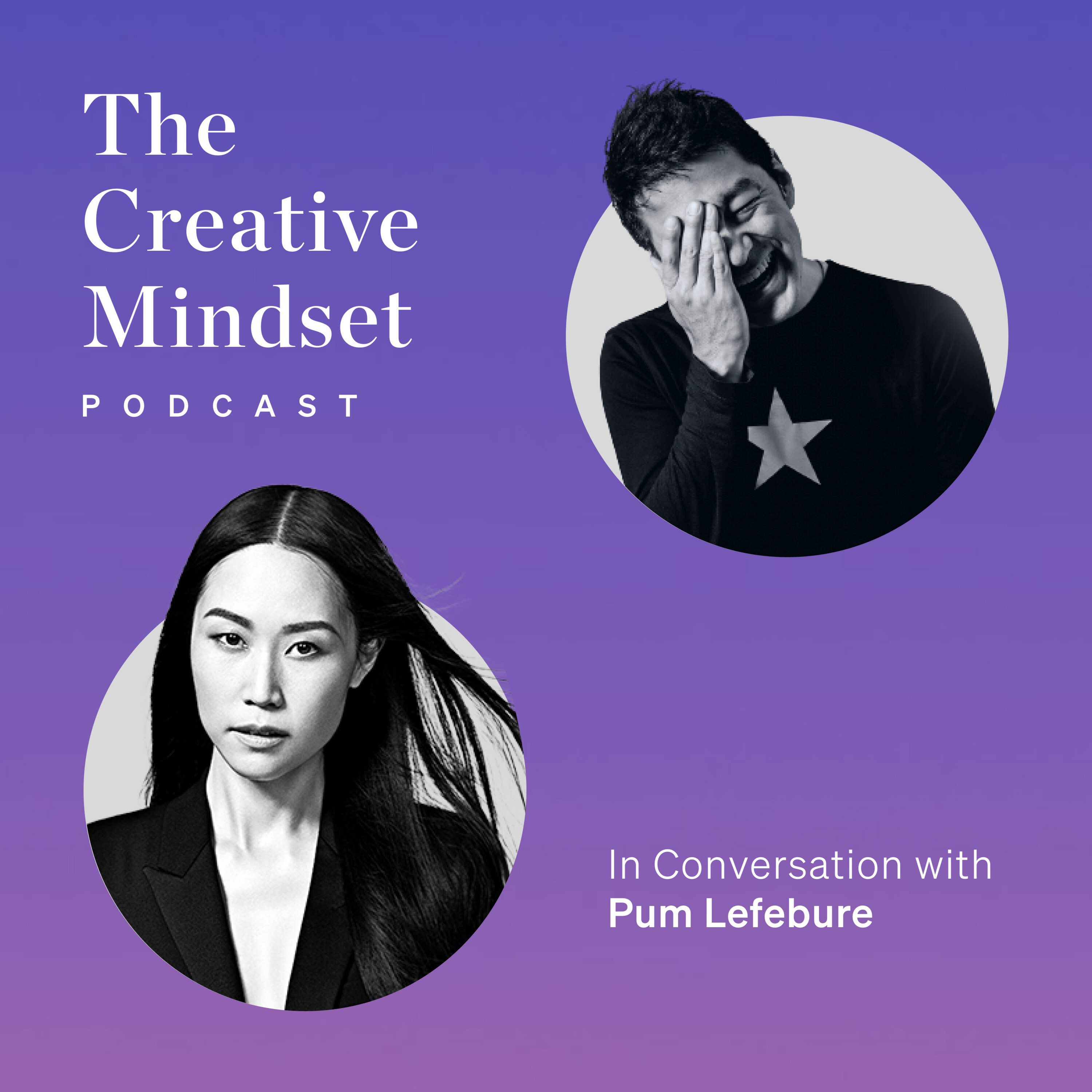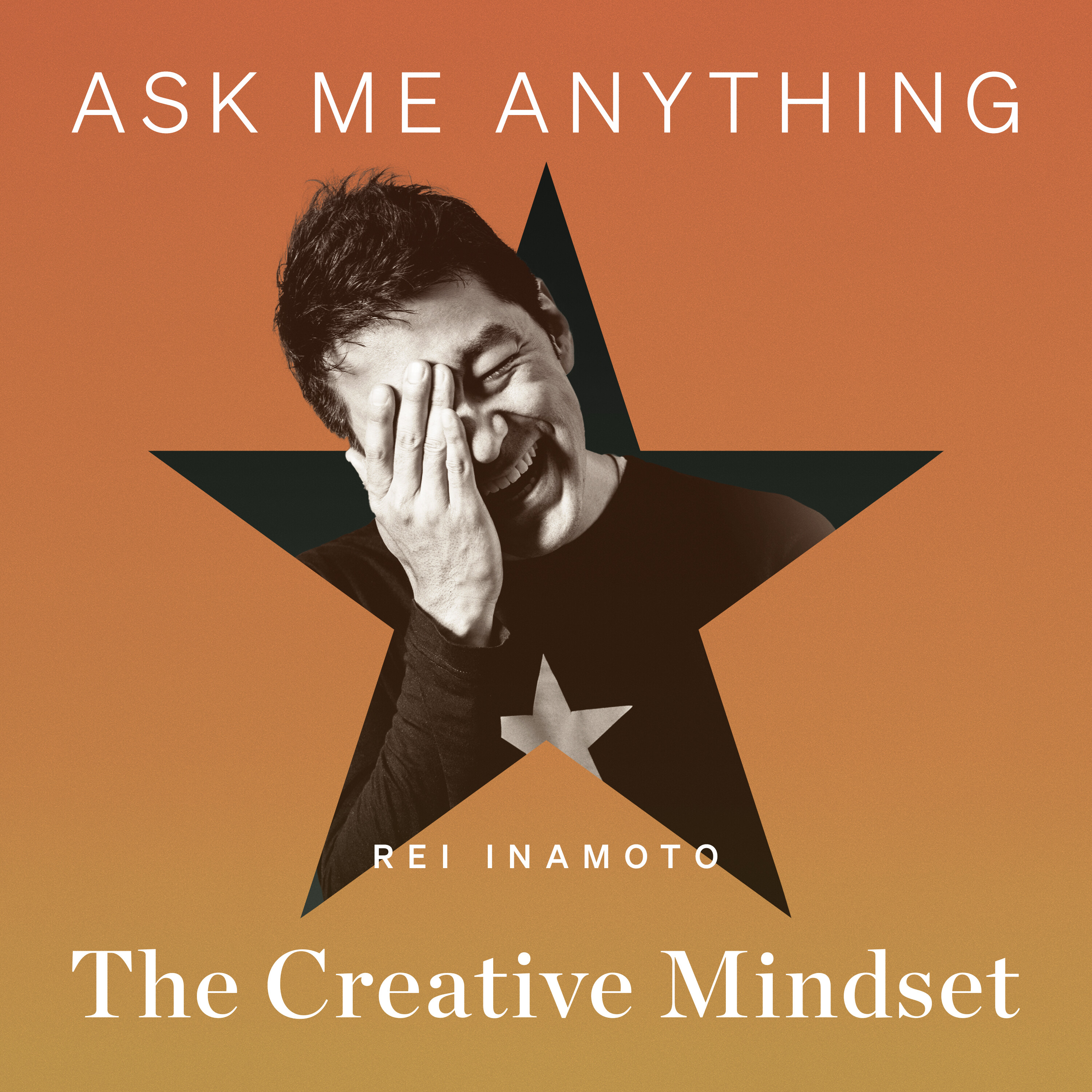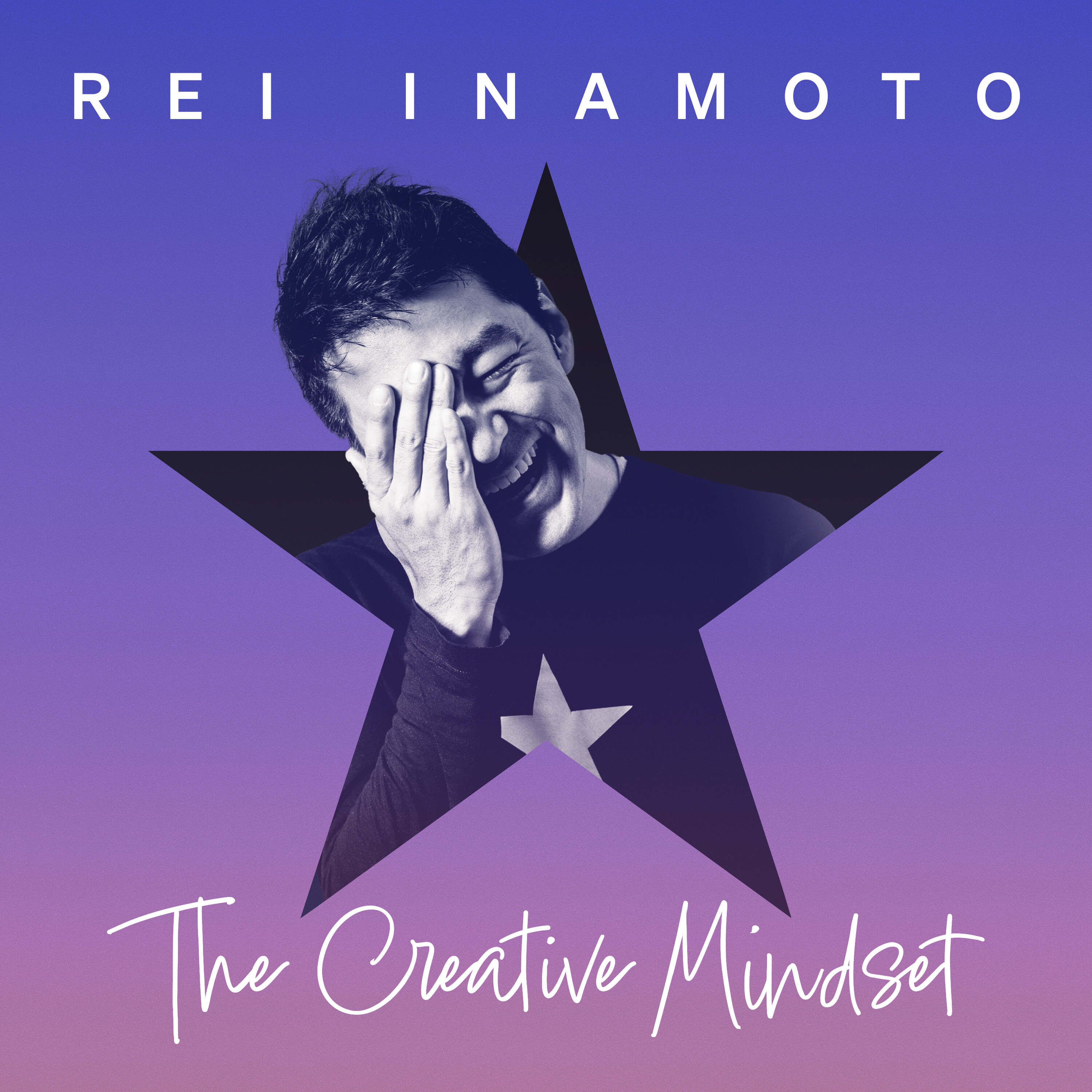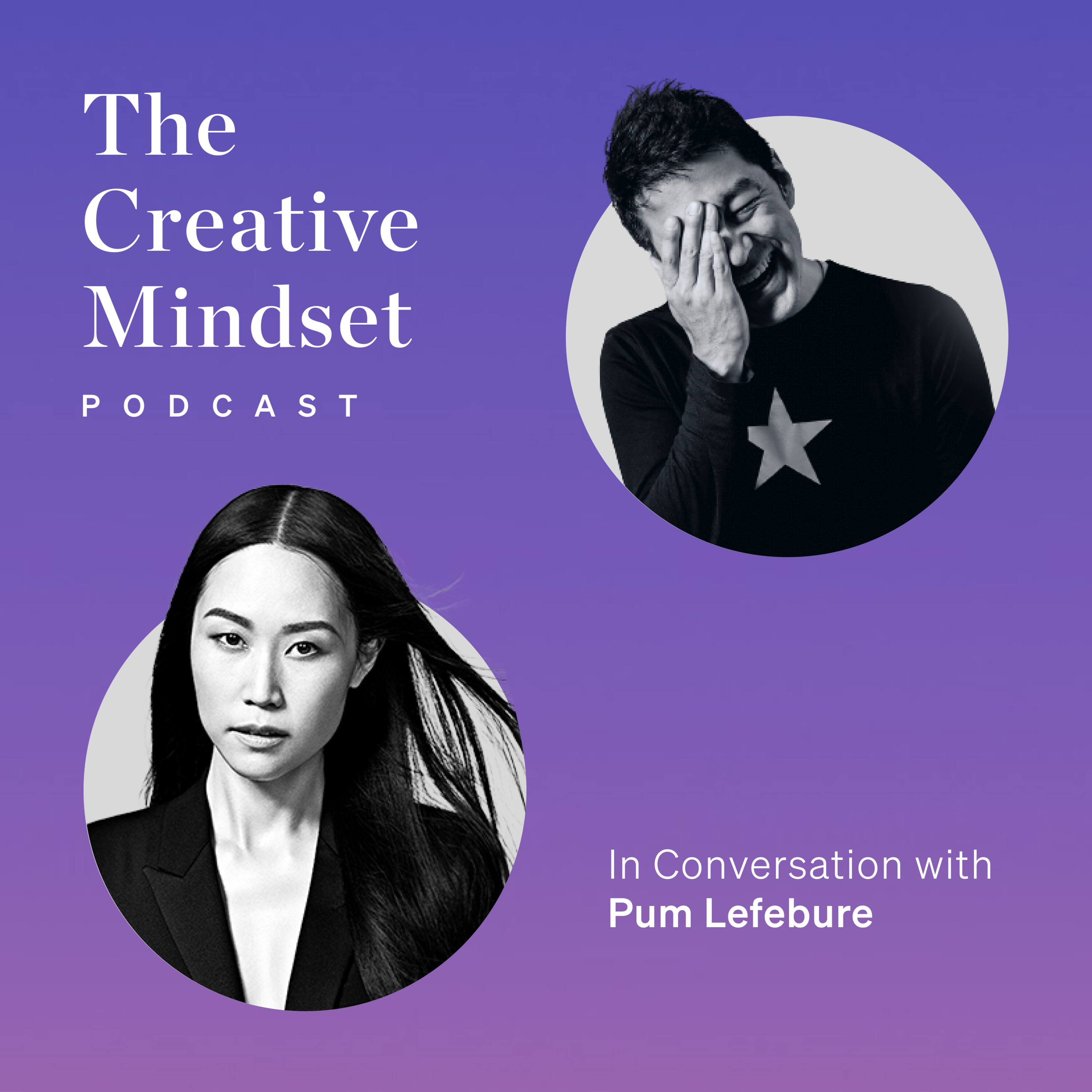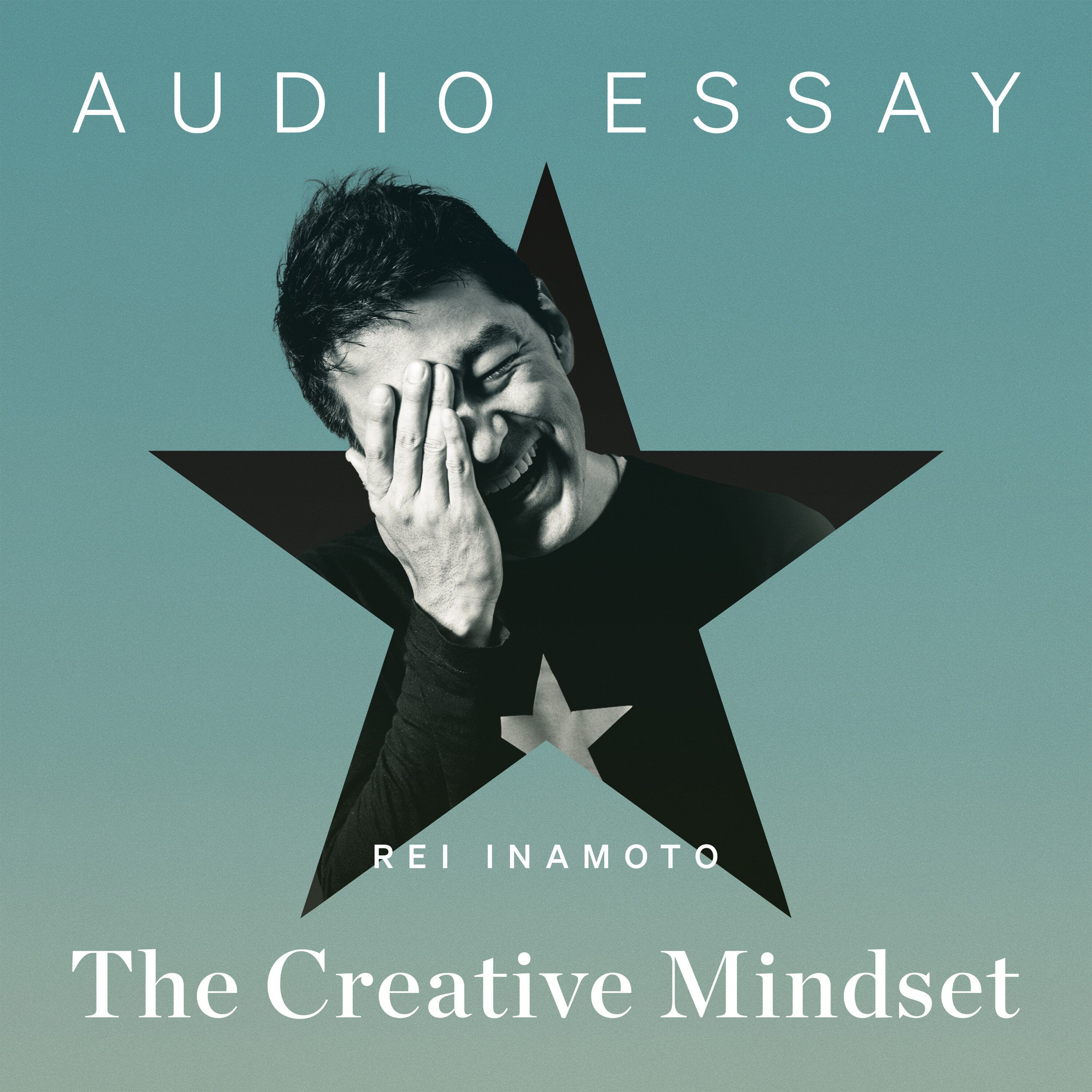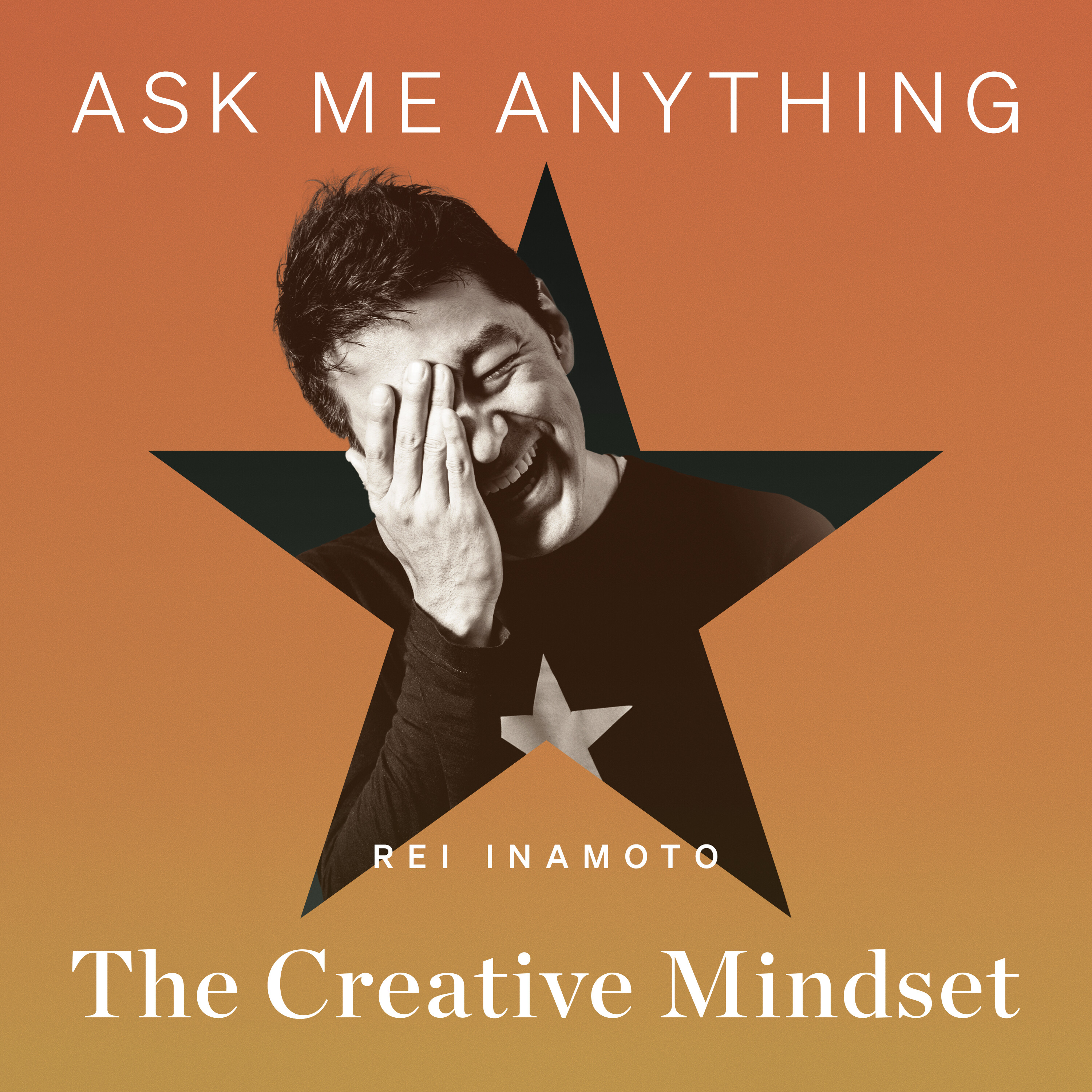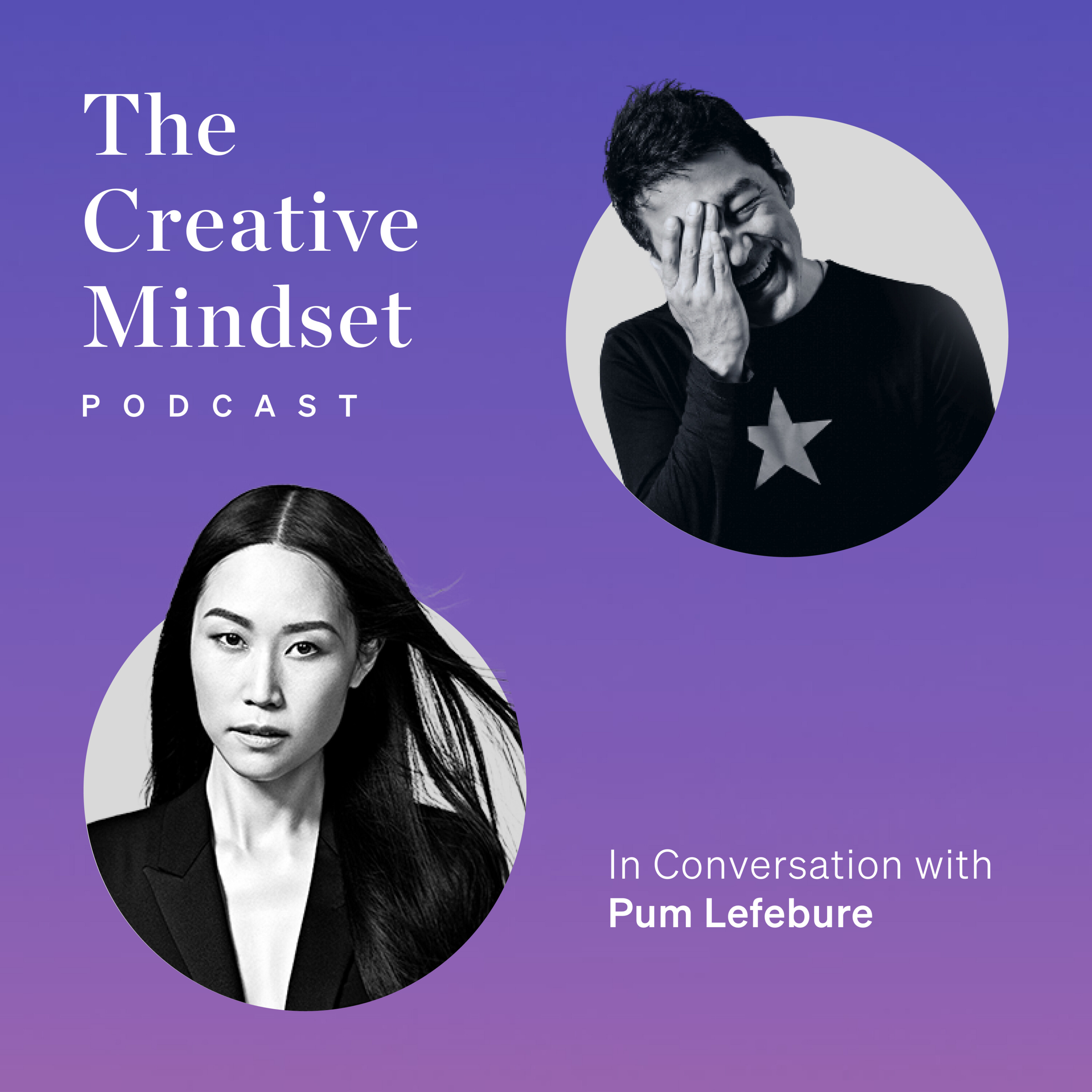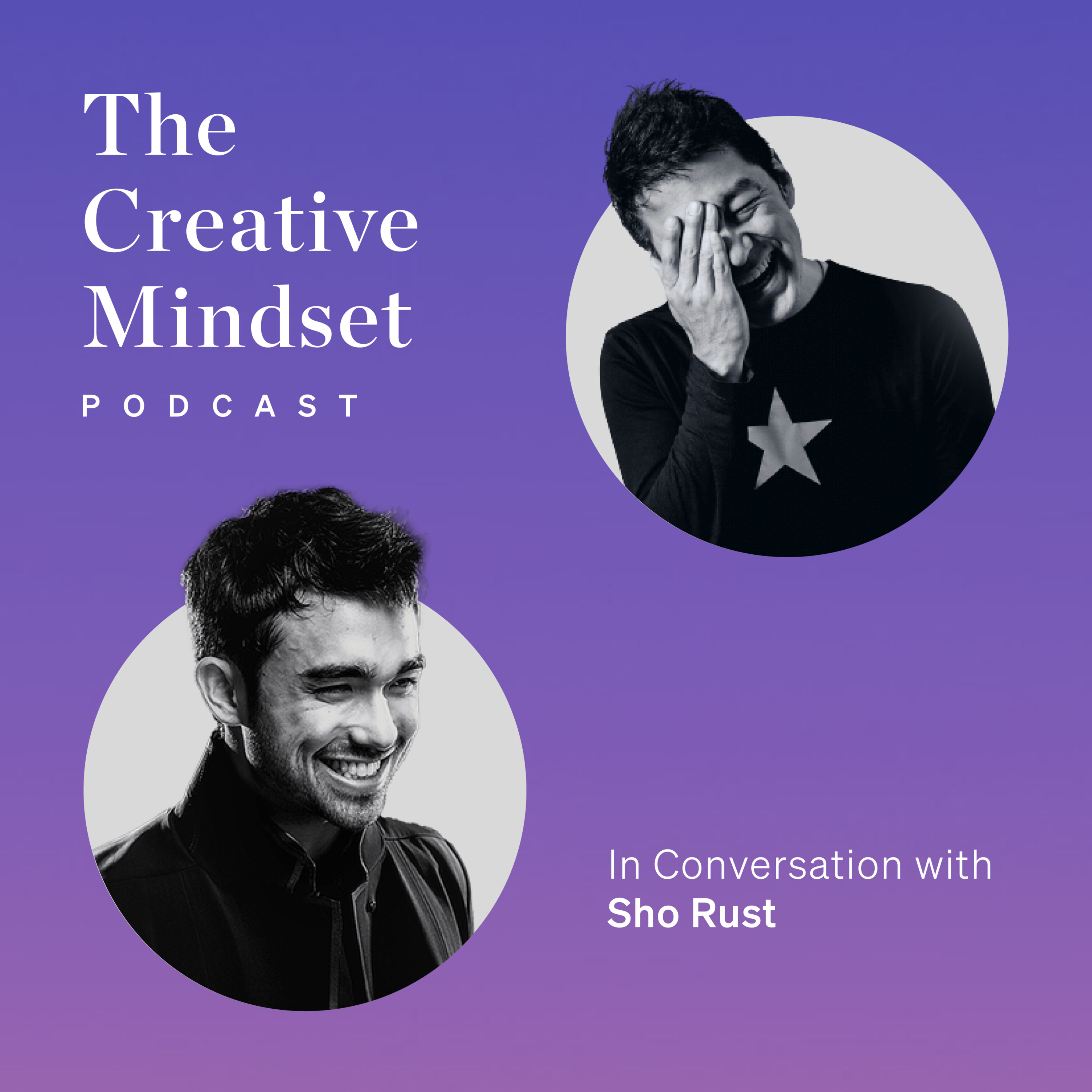Generative AI has been the topic of the year, not just in the creative industry, but various industries and how it might impact the way we work and us as human beings.
Since the explosions of tools like ChatGPT, MeetJourney, and other generative AI tools, there have been many attempts at leveraging AI in the creation of content.
However, at the enterprise or brand level, there haven't been that many viable or successful case studies of AI for and by creatives.
Today's guest is Pum Lefebvre, the co-founder and the chief creative officer of Design Army in Washington, D.C.,
where she oversees all creatives.
Pum is a creative coming through the agency's doors.
An award-winning creative director and savvy business leader, Pum is a Thailand native who brings a global sensibility to American design.
She is also a dear friend of mine, and we are of the same generation of designers.
We came up together in the creative industry as immigrants trying to make it in America.
There was a lot we talked about, so we decided to split this into three parts.
At the time of this recording, Pum had just launched a campaign for the creative industry.
She launched a campaign for one of her clients, Georgetown Opticians, and I had seen her work being featured online, and that's how the conversation started.
In part one, we go into the specifics of how she built the campaign using Meet Journey, how long it took, and the advantages and disadvantages of using AI for a creative process.
What happens when a professional designer uses AI for real client work?
That's the topic of today's conversation.
So let's get started.
So all the tourists, they have to wear glasses in order to protect their eyes. And, you know, we start with that. So they look very chic and cool, you know, whatever from fashion standpoint and eyewear that they wear.
Now, they come face to face with alien and we call it Aileen.
The Aileen is the fictional creature.
The Aileen is the fictional creature that is, you know, they are the native of the planet.
So at the first time, they're very creepy. And the more, you know, they have both interaction together, the eyes, the aliens become really friendly.
And they kind of like think of like the Yoda, you know, really teach these people how to take care of their eyes or how to choose glasses and so forth.
So it's a really fun story, you know.
It's a really fun story about adventure in AI planet.
For our studio, we take adventure in AI, you know, using AI to learn how to, you know, create a campaign.
One thing that I was very impressed by before we get into the craft of the work was the timing, right?
The last few months, especially since the end of last year, 2022 to the beginning of 2023.
Both visual tools as well as text tools, right?
So tools like DALI and Meet Journey since last year and then ChatGPT in the last six months or so have all of a sudden drastically improved in its quality of the outputs.
You know, a year ago, if you tried to do this, you probably couldn't have done it at the quality, right?
Yeah.
So was this something that you proactively presented to the public?
The client proposed to the client or was it, hey, you know what?
It's the season, almost the spring season.
We have a new collection coming up.
It's sort of a regular cadence that they had.
And then you just happen to say, you know what?
Let's use AI to produce this campaign.
How did it start?
So let's start with my experience with the AI in general.
I use Meet Journey.
And I remember last year in the fall, I started seeing.
Posts on Instagram, people using AI.
And I was not that impressed with the result.
It just look, you know, kind of average artwork, right?
I remember back in November when Meet Journey released version four.
And I was shocked of how incredible the image.
You know, how...
The way it looks was really mind blowing to me.
And I thought, okay.
Okay.
Maybe this is the time for me.
for me to jump on it and really experiment with this software just on my own you know during
Christmas I was playing with mid-journey to redesign my house or creating a wardrobe or
do like fun fashion thing you know it was just kind of a hobby you know you do at night so it's
experimenting with like okay do we how do I design this house that it looks like a house
that's it in the middle of Lake Como with spaceship is flying all over it like it's
just limitless and you know it was just playing back in December then in January after Christmas
break you know the client call and he say he's opened a new store we have they have
multiple locations in mid-Atlantic and they opened a new store and he was needing of a new
campaign you know that have to pretty quickly including POP poster retail signage as well as
you know the website and you know we run their Instagram account so I thought okay for the time
that we have for four weeks we we're not gonna have a lot of time to execute this I mean I do
four times a week and I'm not gonna have a lot of time to execute this I mean I do four
four times a week and I'm not gonna have a lot of time to execute this I mean I do four
shoot all the time I go to do you know do big shoots with director and great photographers
work with wardrobe makeup stylist casting all that stuff so when you think about it
the assignment is also come with time limitation of four weeks so I thought okay let's I want to
experiment with AI and see what it can do and then I was concept I was like okay let's do an AI
campaign and do an adventure in AI and see how far we can go with our imagination using this
technology and that's how it's come about and to get into the detail so was it the client you know
calling you and say hey in four weeks I have to open these new stores help me yeah and then you
like literally doing the work yourself or did you have a team did you brief the team and say hey you
know we got to do this we got to do this we got to do this we got to do this we got to do this
we got this client we got this request from the client we have to turn things around quickly what
was that detail so I did the work myself in mid journey which is rare I usually you know we do
the team but it would we were so busy after um you know holidays in January everyone's so busy
and I I had some knowledge of how I have been training my own AI you know of like things that
I like how
it's look you know what reference art history reference I was playing with so I kind of have
a basic base already for my personal fun project and then taking this to um you know the next level
and really creating the a world that you know in my head but then after that you know what we did
was create a image through mid journey without glasses on
and then we apply glasses which is on ecom it's like online store yes yes there's an online store
you know usually all the product is in my background not that inspiring so I was not like
you know it's it's four weeks do I even do a photo shoot of the glasses you know go which we
can do and some I think a few we did you know and then shoot it in different angle or do we use
the ecom photo which already come in from like the online store and then we apply glasses which is on ecom
you know straight shot sideway profile so far so it's like okay let's just see we can create
campaign without a photo shoot at all right so we bring the glasses on to the model photo without
glasses on and you know make that decision so in a way for me it's not only become a creative
director but you are now the director you are wardrobe stylist you are casting
you know all those decision is now done by one person but then you know I've seen I generate all
the images and give it to the team to push it further in terms of consistency of the color
you know we want to make sure the campaign looks beautiful and the color pink is not all over the
place typography though has been added with our team yeah because that one thing mid journey cannot
do very well
is type so let's say if you want to say imagine Vogue cover from the 1950 era wearing you know
someone wearing Coco Chanel and it split out the word Vogue it's going to spell incorrectly
mid journey is not very good with typography interesting interesting yeah or like it will
all wrong okay for the for the the the sake of the the listener I
want to say that I think it's a good idea to have a copy of the copy of the copy of the
copy of the copy I want to do I want to try to describe you know the work that you created just
again just so that they can visualize so like you said imagine this planet outside of planet earth
it's like a desert rocky desert there are few bodies of water you see various people very dashing
looking like you said perhaps could be in the 50s but what was interesting was that it could be in
the 50s like in 1950s and then it could be in the 50s and then it could be in the 50s and then it could be in the
50s or it could be maybe 2050 so there's this retro futuristic seal to these characters different
races you're naming you know Irene Isaac Iris and Iriot so you know you played up this AI versus
your eye all of them everybody is wearing pink very smartly dressed suits men and women
different races and all these glasses that to your you know what you were saying the story of this
unknown planet is that so that everybody's wearing these again retro futuristic looking
glasses and then in the middle of this it's this creature a huge creature that's like a balloon
and in the middle there's a gigantic eye in so and then everything is coordinated in that in pink
that's sort of the uh uh the the visual and presented like a movie and I mean you
you have made like trailers and little animations and little movies but it as if it's a promotion for
a fictitious movie exactly and I think it's the fun part right I mean we use AI and we know the
look and feel is not going to be like a real photo shoot that you would see in Vogue magazine
but that's intentional that we want to create the look from you know recall the past you know the 50s
old movie Hollywood advertising but then the people looks quite futuristic you know so the magic is in
combining make and mix different eras together um to create your own and I think that's why when
you look at it it has that haunted power that okay this looks different um because like we we
do both ancient alien
mix with futuristic look so it's like ancient future was kind of our theme you know how do
we create that look and feel of ancient future so you as soon as you got the call from the client
you had this idea of why don't I play with the word AI and AI that was the the original clever
twist and then you had the idea of these travelers traveling to this unknown planet in the 50s where
it's 1950s or 2050 or even you know 30 50 who knows but these travelers so tell us like what
were the prompts that you put in to to start off with and like what was that process like
I think you know we started with the people first because I want to creating certain look and feel
of people now what they wear is different so you know I can't tell exact from but just in general
you know imagine 1950 movie poster um you know from let's say uh Hitchcock style you know wearing
beautiful pastel pink um Pantone color you know be very specific and um and uh with the background
of Mars in the movie of Space Odyssey I mean you know it's almost like the prom is extremely long
um because I want to make sure that it doesn't look like something that already exists
so it's a combination of different designer and Architect and movie director of femme
you know that kind of mixed together to create our own with this I was very careful about because
you don't want to copy an artist's work you know that the ethic part right like you got
And we can talk about that.
As a designer who creates campaigns all the time,
we want to make sure that we recall the period of 50s
or a work of certain artists, but then you've got to mix it.
Because otherwise, Midjourney will just split.
Let's say you say Andy Leibovitz, it's going to look just like her.
And a lot of times I even see some people uploading an artist's photo
and then type a sentence in, and then it's just split.
So the choice of A, B, C, D that Midjourney is splitting out,
it looks too similar to, let's say, Andy Leibovitz.
Kind of recall that picture because it's a famous photo.
And what Midjourney does is grabbing everything on the internet,
like those data, and then it's creating, conceptualize an image.
So you've got to be quite careful in terms of what collection of prompts you use
and not just use one source.
You have to use multiple.
That's just from the ethical part.
I just want to make sure that we don't kind of try to...
Yeah.
You said earlier that you shot glasses separately, right?
And in this case, the client, they sell glasses.
Did you know going in that you had to do that?
Or did you try to, you know, mid-journey to prompt this kind of glasses?
So let's say Parchier glasses.
You know, we all know you have to type in, you know, Parchier glasses, right?
Parchier.
Parchier.
Parchier.
Parchier.
Parchier.
Parchier.
Parchier.
Parchier.
Parchier.
Parchier.
Parchier.
Parchier.
Parchier.
Parchier.
Parchier glasses.
So let's say Parchier glasses.
You know, we all know you have to type in, you know, famous Parchier glasses.
It doesn't quite, you know, I, I, because at first I thought we don't need to do Photoshop.
I can just say Tiffany glasses, Parchier glasses.
It doesn't quite come out exactly the same.
So that's why like it didn't work.
I think one day it will, give it six months, you know, but like at the time that we created
the glasses does not look exactly the same.
But in this case, I think what worked great,
really was the fact that it's a client,
it's a brand with a product that is relatively synthetic.
You know, it's an object, right?
It's not a shirt that is somewhat organic.
It's a synthetic product so that you can shoot it separately
and you can Photoshop onto the models
as opposed to if it was, you know,
a fashion company with a shirt and multiple layers,
it would be very difficult to give Meek Journey the prompt,
the right kind of prompt to get exactly that product that they have.
Yeah.
Yeah, I think it's a very good use of this technology for this concept.
But then we add animation, you know, you see alien jumping.
And if you're looking at the, you know,
there's an alien jumping through the glasses.
And we add storytelling into it.
So from the moment that you got this request from the client
till, you know, you going into Meek Journey and presenting,
like, did you do all that by yourself?
All the images I generated.
Yeah.
And how many days and what was it that you presented to the client?
How long did it take from request to presentation to approval, I guess?
Well, the whole thing is four weeks, right?
Right.
So like first week.
I was just like really generating images.
Yeah.
The people are easy.
The landscape is easy.
The eyeball is difficult.
Yeah.
Yeah.
The alien, because that is a completely innovative and unique character that was created by AI.
Right, right, right.
Yeah.
So, so pretty much to get back to the process, it took me like a week and a half, two weeks.
Yeah.
To get it where I want it to be.
And you should see some of the one that I reject.
It's just horrible.
It's so scary.
It's so freaky scary.
I was like, how do I make it lovable?
And how do we make it like alien and cute, you know?
Yeah.
But it took a while to get to that point.
So two weeks, a week and a half, two weeks to generate and then giving a concept, you know,
create a copywriting of different episodes.
So, you know, like attack of the blue light, right?
So you kind of have to have a concept first before you tell what AI to do.
So it's the same.
I don't let the AI generate a concept and then thing.
You kind of have to sketch it out in your head.
I want to do attack of the blue light.
I want to do the double vision where you see the moon, you know, two moons or like it strikes the spring.
I see like a pollen.
And, you know, flying through allergy season, you know, or like the return of dry eyes.
We want very kind of desert like, right?
So, so you concept that out in sketches first and then you ask with journey to creating a straight idea.
So, yeah, yeah, yeah.
Again, you, you, so all this time you're doing this for yourself, like typically you, as a creative director, you get a request.
From the client, you know, you have an accomplice and project manager, whoever, and then you brief, you, you find your resources.
You brief the team.
They come to you a couple of days later with an issue idea, maybe sketches, and then you go back and forth and you put it into a presentation, right?
But like all of this, like you had the initial idea of these travelers, uh, in AI and then, oh, you know, how do I connect that to these product features and the product benefits?
Like you're doing this.
Okay.
All you, in your head, all your stuff.
Yeah.
And then, you know, I work with a team too.
I mean, I have the idea and then the team, like we talk about, okay, what we can do, what it's going to look like, how to animate it.
So it's collaborated, but the person that worked on the journey is me, which is weird because, you know, like it is like going back to learn Photoshop again or something as a creative director.
And, um, but it was fun.
I thought I had to, in order for our.
Company to, you know, change the way we work, I want to experience it myself first.
So I know what I, I talking, you know, what I'm talking about, I need to be confident, uh, and create an example so I can tell the client and ensure them that it is, this can be done.
Um, so, you know, for me, AI is the future, uh, of, uh, design and it will totally change the way we work.
And, you know, I thought I need to just get on it.
It did take some, you know, quite frustrated in the way, sometimes you can spend a couple of hours and you don't get the result that you want it to.
What, uh, what gets you excited about that very real future that we now live in?
I'm excited because, you know, as a business owner, right.
Become more creative again.
I like I'm the one that.
Doing the work, which it was supposed to be like fun experiment thing.
I mean, I, I probably, you know, we will teach this to all my, everyone on my team to learn how to do it.
I'm excited about the possibility of creating something that human might not be able to imagine or not imagine human can imagine, but human might not be able to execute, you know, a flying island.
I mean, imagine like.
Doing that eyeball, right.
Um, I'm excited about the speed of thinking.
I mean, as I think it's like having a magic wand.
As I think the idea, I go, bing, here we go.
You know, Cinderella with a glass slipper appear right in front of my eye.
Um, I'm excited about us.
Working with the AI in a way as a collaborator, not as a, um, I don't want to be a slave for AI in a way.
Right.
So like, when you think about it, the different between this campaign, a lot of AI campaign that you have seen, you know, you see like high catch up campaign, for example, which, you know, they do that.
It's like, here's high catch up.
Our campaign is we.
Asking AI to, what is high catch up look like in different style or Coca-Cola or whatever that is like the campaign of how machine spit out the image, the way I use it is very different.
You know, we use it as a tool.
The campaign is using this as just like a Photoshop.
Tool or illustrator.
So we, I, my relationship with AI is like using them as a tool and not letting their split out result as my campaign.
You, you see what I'm saying?
Yeah, sure.
So that was part one of my conversation with Pum Lefebvre, the co-founder and the chief creative officer of design army in Washington, DC as a designer and a creative myself working with national and international clients.
Okay.
We've had numerous conversations with them about using AI and how to deploy and implement the tools in various aspects of what they do as brands.
When it comes to creative executions, many of the clients, particularly big national or international level clients are hesitant to use AI because there are still.
Numerous issues that either brands and or technology companies haven't resolved a lot of background content that AI uses to generate the output comes from the web, not just a lot.
It's actually everything that's, that's where everything comes from.
So inevitably the output is based on and could include things that have been created by other people.
So there's.
An obvious copyright issue, and we are yet to find a clear resolution.
Companies like open AI have implemented ways for mitigating that risk.
So for instance, a little while ago, they open AI announced that they would actually cover the cost of legal fees if the user gets sued, uh, by, by somebody else.
So that's one way to mitigate, but I would say that's a bit of a bandaid.
To an issue that I think the technology world, the creative world, and the business world have to resolve in order to be able to use generative AI in a viable and meaningful and safe way.
Having said that, as I said at the beginning of this, uh, this episode, Coombe's example was and is to this day, one of the few successful ways of implementing using AI.
To actually execute a campaign, granted that the client may not have been an international, uh, level, but still of a certain size that needed to take a certain risk in using AI and creating the, the output.
It was also interesting and very useful to hear from somebody who used it and realize what the strength advantage.
And for instance, you know, as she said in my conversation, she realized that AI had limitations when it came to actually rendering the product itself.
And I, I thought it was insightful and ironic at the same time, because the very thing that her campaign was trying to feature was these pairs of glasses and that had to be done manually and by human beings.
To make sure that the representation of the thing that the campaign was trying to advertise humans needed to, to create.
So the impressive thing was that Coombe realized the right balance between AI and humans and used AI in a way that enhanced the output.
And also timely when she launched this campaign, uh, earlier in 2023.
The topic was even harder than now, and there weren't, there hadn't been that many examples of these executions that were out there.
So I think it was very timely, but also very experienced insight that she had in order to execute it in the right way.
If you are listening to this on Spotify, there's a Q&A field.
So please do send us your questions and comments.
And if you like our podcast, please leave us a five star rating.
We'd be so grateful.
In the next episode, we get into how we as creatives and designers should maximize our creativity in the age of AI.
So stay tuned.
I'm Reina Moto, and this is The Cray Mindset.
See you next time.
